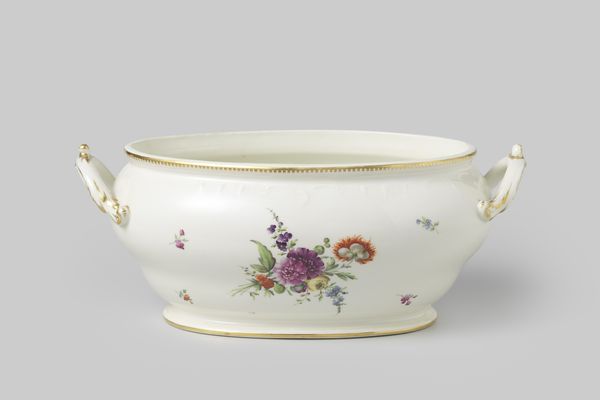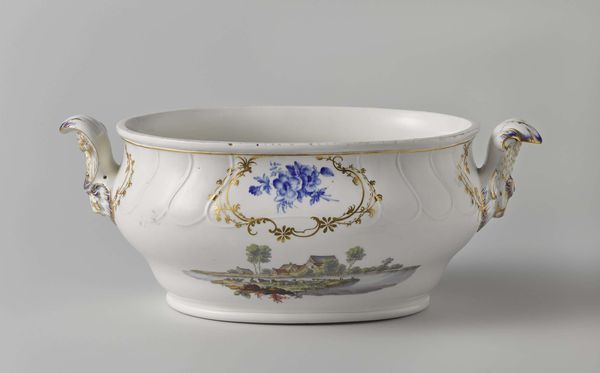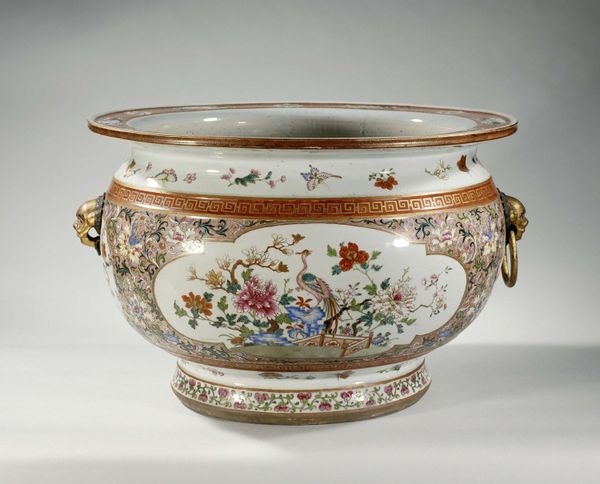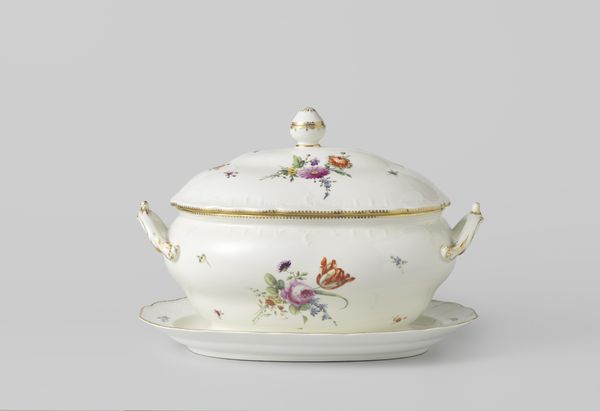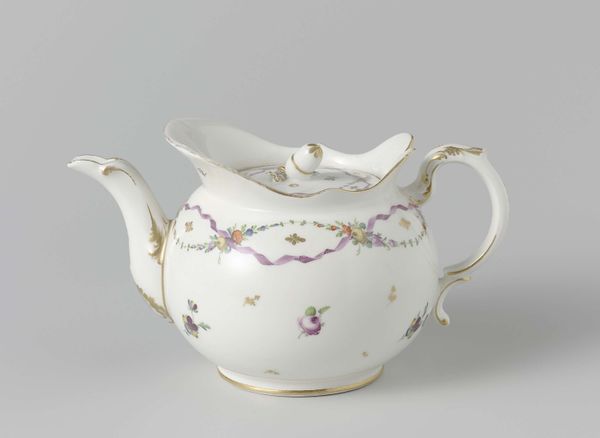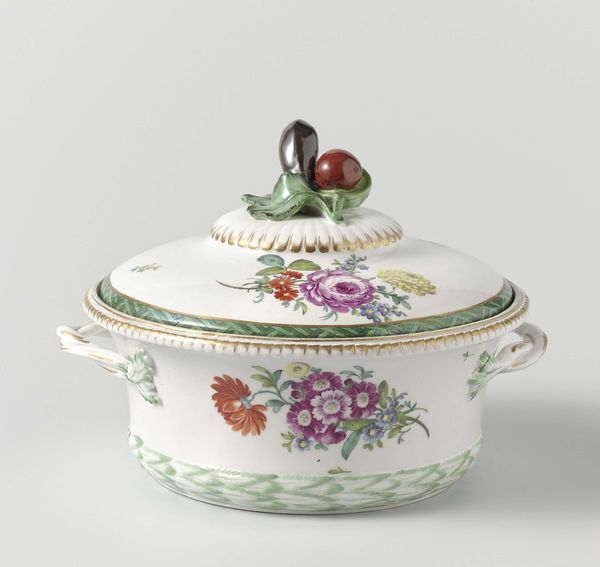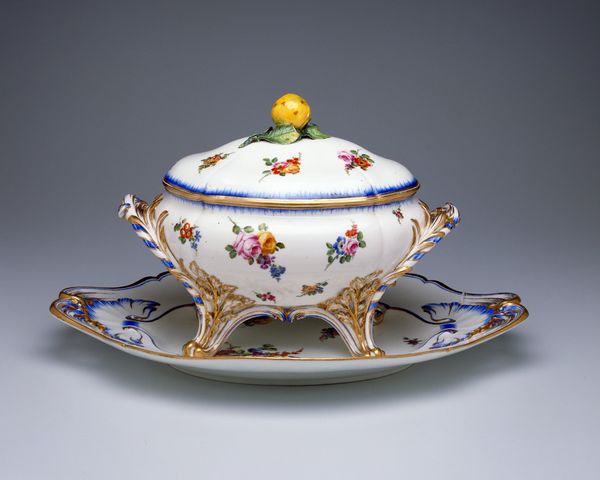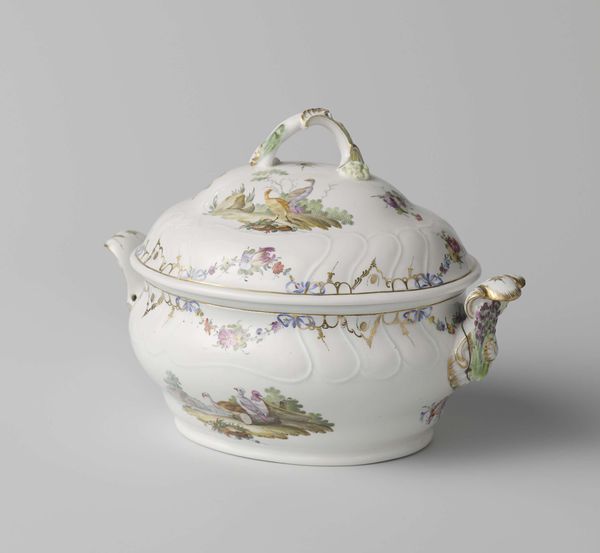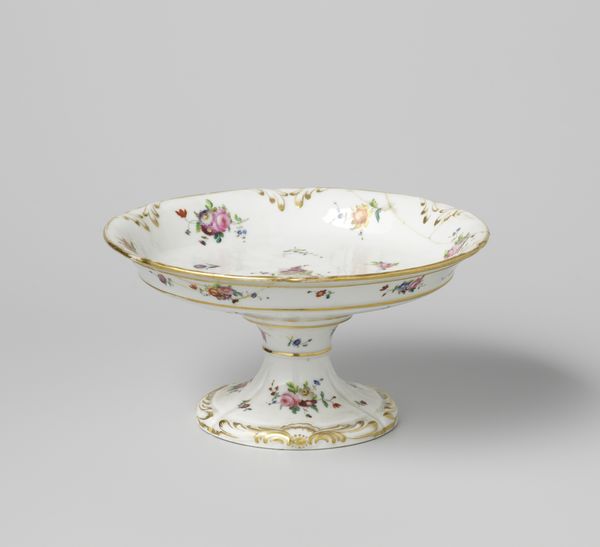
ceramic, earthenware
#
ceramic
#
earthenware
#
ceramic
#
decorative-art
#
rococo
Dimensions: height 18.7 cm, height 32.0 cm, width 37.3 cm, depth 22.0 cm
Copyright: Rijks Museum: Open Domain
Curator: It is lovely to view this delicate Tureen and stand, crafted around 1764 to 1768 by the Weesper porseleinfabriek, out of ceramic and earthenware. The detail is really incredible. Editor: My initial reaction is how striking its rococo aesthetic is, almost whimsical. The feet! They look like some strange beast gripping the surface! What was its function, exactly? Curator: Well, that is what I find so interesting: its function as a utilitarian object elevated through the material. Earthenware and ceramic were costly, and to fashion them into this ornamental tureen highlights changing trends in dining culture, or how these objects are displayed in homes, reflecting affluence. It bridges the gap between fine art and functional craft. Editor: Yes, it does say something about access and class. We must remember how an object like this tureen also functions as a marker of status. Who would have been commissioning it? Who could afford it? Did the growing Dutch middle class desire decorative items? Curator: Precisely. And what labor was involved? Examining the manufacturing process and working conditions allows us to understand not just the artistry but the economics of porcelain production at the time. Were women and children involved in these processes, particularly in decoration? Editor: The social context really dictates our appreciation, doesn't it? Did pieces like this draw influence from earlier works of a similar ilk, like a statement of status that harkened back to courtly life in the Netherlands or abroad? Or was this style embraced by merchants keen to project wealth? How was it received? Curator: Excellent points. Considering reception really opens doors to broader conversations about taste, status, and the commercialization of beauty. These pieces would have moved through very particular networks of distribution. Editor: It’s fascinating how such an ornate object can trigger discussions about labor, economy, class, and networks of distribution in 18th century Netherlands. Curator: Indeed. It brings attention to what we value. The stand invites one to ask: How much has changed since it was made?
Comments
rijksmuseum about 2 years ago
⋮
The shell motifs on the handles and feet, as well as the little boy on the lid of this tureen, derive directly from a model that had been developed at the Meissen porcelain factory in the 1730s. Modeller Christiaan Gottlob Berger, who had trained in Meissen, brought the model with him to Weesp in 1759, when he was hired there.
Join the conversation
Join millions of artists and users on Artera today and experience the ultimate creative platform.
